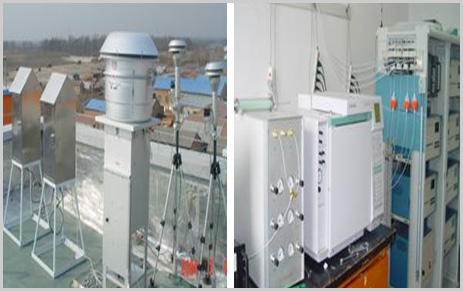|
Website:http://www.cern.ac.cn
Main Research Fields
Mechanism and prediction of the urban and regional air pollution and their effects
on the atmospheric environment;
Evaluation of the trace gases and aerosol cncentration, the mass exchange between the biosphere and atmosphere and their effects on the environment and climate
Main Achievements
Study on Carbon Budget in Terrestrial and Marginal Sea Ecosystems of China: Aspects and Progress
Titled as Study on Carbon Budget in Terrestrial and Marginal Sea Ecosystems of China, CBTSEC, a flagship project of the Knowledge Innovation Program has been launched by the Chinese Academy of Sciences (CAS) with 70 million RMB (equivalent to some US $8.5 million) financial supports. Some 150 scientists and more than 250 graduate students and post doctors from 18 CAS institutes with different academic disciplines are involved in the project. Over the period from 2001 to 2005, the scientists will work on the themes as the geographical and temporal patterns of carbon sources and sinks, the control mechanisms of driving the processes of carbon cycling in the terrestrial and marginal sea ecosystems—both anthropogenic and non-anthropogenic, the likely dynamics of the carbon budget into the future, options that can enhance the carbon storage and/or reduce the carbon emissions from these ecosystems. The figure shows the framework of the CBTSEC.

Past, present and future patterns of biological C sources/sinks
Options for mitigating C emissions and/or enhancing C storage
The Atmosphere Background Observation Network/CAS
The Atmosphere Background Observation Network consists of five stations, Fukang desert station, Changbai Mountain station, Xinglong station, Gongga Mountain station, and Dinghu Mountain station. The objective of the Atmosphere Background Observation Network is to collect basic scientific data for relative scientific research and progress, for national projects and international environment diplomacy.
Chinese Terrestrial Ecosystem Meteorology and Radiation Observation Network
Thirty-eight sets of Vaisala M520 radiation apparatus constitute the most advanced ecological, meteorology and environment automatic monitoring network in typical ecosystem areas in China. It provides a lot of high quality data for global climate change, atmospheric Chemistry and ecology researches. The characteristic hazemeter observation network can provide calibration for satellite remote sensing.
Objectives and meanings
- Interactions between global change and ecosystems
- The radiation distribution characteristics of Chinese terrestrial ecosystem
- Interactions between radiation variation and global climate change and changes in
environment, such as the increasing of greenhouse gasses
- Calibration for the result of satellite remote sensing
Distribution of Chinese terrestrial ecosystem observation network stations
- The area can represent Chinese typical ecosystem
- The area had not been infected by human activities
The figure is the Distribution map of Ecosystem research stations of CERN.
Apparatus
Weather elements: wind direction (WAV151), wind speed (WAA151), air temperature (HMP45D), humidity (HMP45D), pressure (DPA501), rain gauge (RG13), soil temperature (QLI150) (0cm, 5cm, 10cm, 15cm, 20cm, 40cm, 60cm, 100cm)
Radiation observation elements: global radiation, UV radiation, photosynthetic radiation, net radiation, and soil heat flux.

The status of atmosphere background observation laboratory at stations
The Sun Hazemeter Network of CERN/CAS
The Sun Hazemeter Network is the first standard network to measure and study of aerosol optical properties, including aerosol concentration, particle size distribution, and their spatial and temporal variation in China. Simultaneously, these data can be used to revise the results of the satellite remote sensing. The large-scale sun hazemeter ground-based network directly provides some basic data to try to reveal the current uncertainty of the aerosol radiation in the quantitative assessment of the climate and environment change.
The network covers almost all of Chinese area, including 18 CERN stations, 4 typical city sites, a data center (Beijing) and a calibration center (Xianghe). Department of Meteorology of University of Maryland in U.S. supplies the instruments and MODIS data. The instrument, FS Handheld Sun Hazemeter (LEDs) has four wavelength channels, 880nm, 650nm, 500nm, and 405nm. The hazemeters were calibrated by Langley plot method and transfer calibration and were uniformly checked. The operation of the network is in line with “General by-law”, Best performance assessment”, and “Data sharing policy”.
Director: Prof. Wang Yuesi
Deputy Director: Prof. Huang Yao
Tel: +86-10-82028726
|
